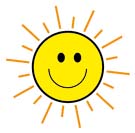Day 4

Goals:
2. Students think about music and its relationship to people as a form of expression and celebration.
Time:
Resources/Materials:
Procedure:
2. Next, develop a discussion about music in general, and ask students about what kinds of music they like. Ask the students what it does for them. Put relevant ideas on the board. These first two steps of the procedure take 10-15 minutes.
3. Give students a brief background about some of the modern people in the Caribbean, focusing on various areas and/or people. Possible topics could include how African-Americans and European-Americans turned to the sea for their main resource after slavery, the use of simple farming to get by on the islands, or how people take pride in their past. Connect these examples to the students by asking them about these topics and their cultures.
4. Next, discuss some of the types of music that are in the Caribbean islands, such as Caribbean Calypso, African rhythms, and even English folksongs that all have been carried on through the generations in the Caribbean. Discuss "goom- bah" and discuss it as music that uses storytelling and dancing to express emotion and ideas. If samples are retrievable, use them here. A music teacher could come in to give samples.
5. Explain to the students that Caribbean Calypso comes from the oppression of slavery and it uses musical satire. Steelband music uses steel drums and it would be fitting to have a music teacher come in and demonstrate how to use some of the drums in steelband music.
6. Explain "Playing Mas" which is masquerading during these types of music which is meant to celebrate life and freedom. Discuss these ideas for 15-20 minutes.
7. For 20-25 minutes, instruct students to come up with some sort of costume using pens, pencils, and markers that would represent the things they like best about life. Have the students draw and color these in on pieces of paper. Use various colors, designs representing things, drawings of things they like, and other creative ways for the students to represent what they enjoy in their lives. Students can also write short songs about things they like to do or what they might be thankful for. These become the students' masquerades as they are "celebrations of life and freedom" just like in the Caribbean carnivals.
8. For the next 15-20 minutes, give the students some net sites to search. Have the students discover what the sites have to do with Caribbean festivals, celebrations, and music. Use sites from the resource list. Encourage the students to explore as much as they can about where, what, and when events are occurring.
9. For the remainder of class, have a sharing session allowing students to share some of the things they found on the internet. Also allow students to show what their costumes and songs represent, if they want to share them. This session is intended to get the students excited about going to the Caribbean and to further learn about it.
Assessment:
Rubric:
3 The student interprets the information, gathers it for the task, and uses the information successfully in developing his/her own costume/song.
2 The student makes some errors in the interpretation of the information and uses it awkwardly in his/her own project.
1 The student grossly misinterprets how to use the information given in his/her development of his/her own costume/song.
(Adopted from Green Bay Area Public Schools)
Curricular Strands:
Reflection - thinking about what music means and does
History/Social Studies - modern people of the Caribbean region
Art - drawing costumes and developing songs
Computers - discovery learning
Extensions:
piracy and local maritime culture (Blackbeard for literature)
music teacher demonstrating intruments
making actual costumes to use in a Caribbean Cultural Music Festival
Carribean Unit - written by Trina Collins, Richard Wheeler, & Daniel Shimek
This page submitted by St. Norbert College Ocean Voyagers Program